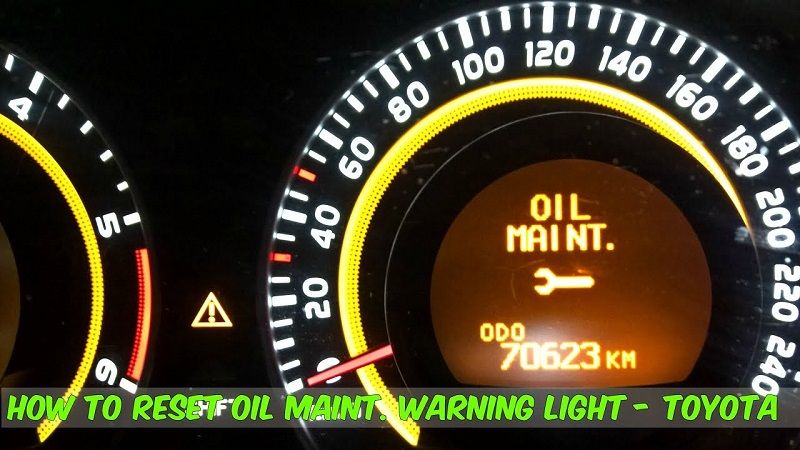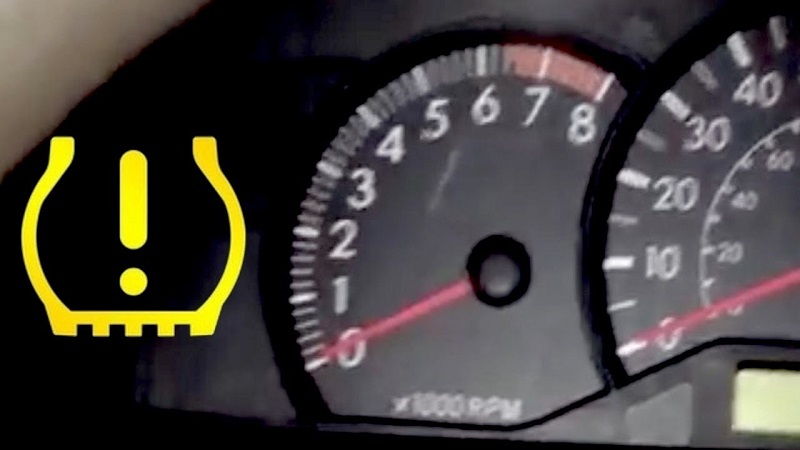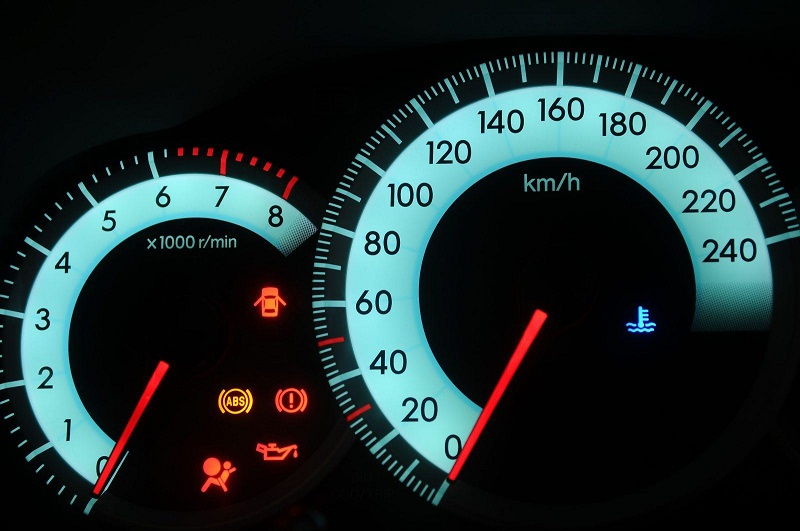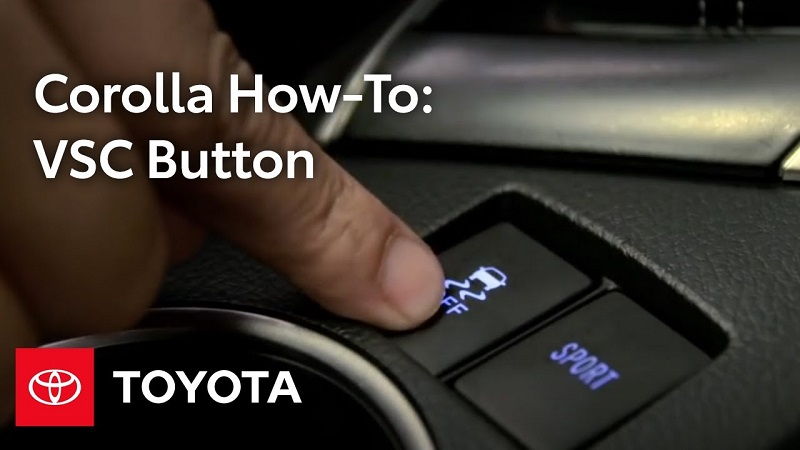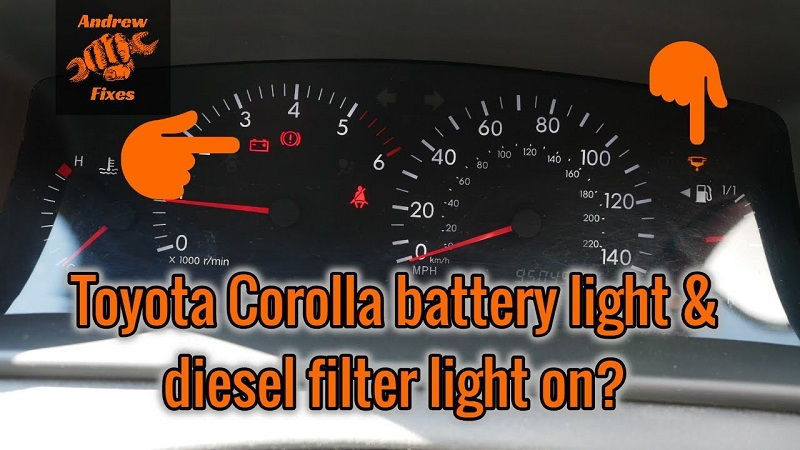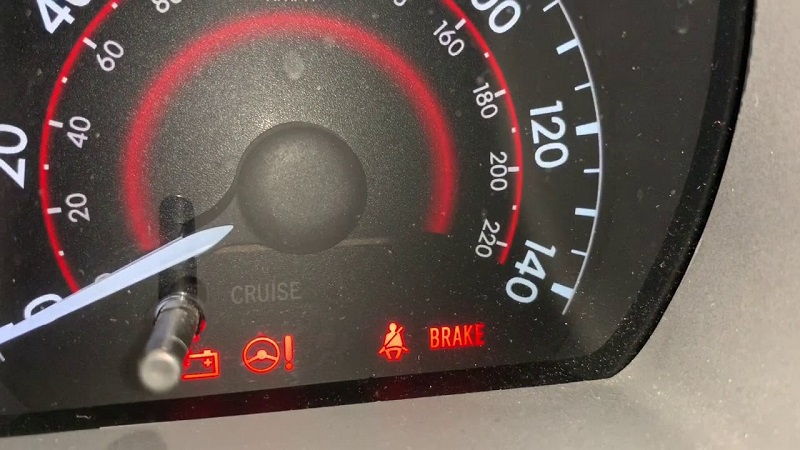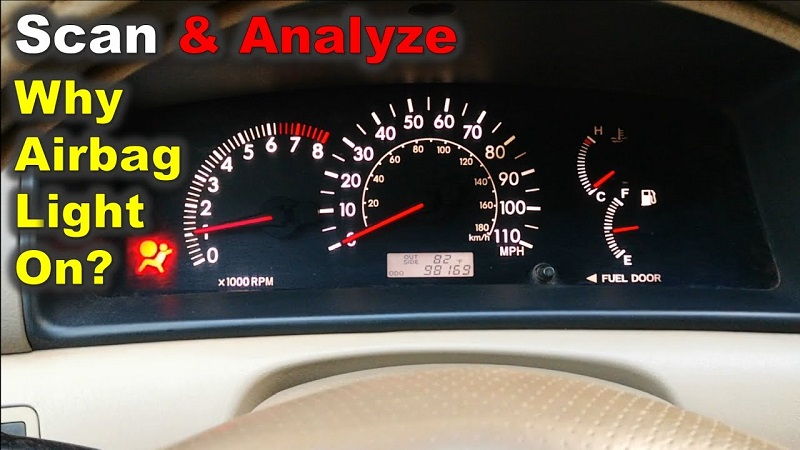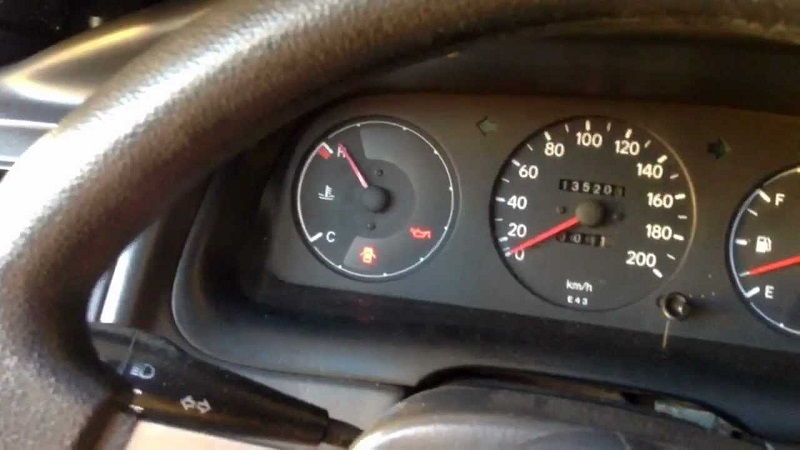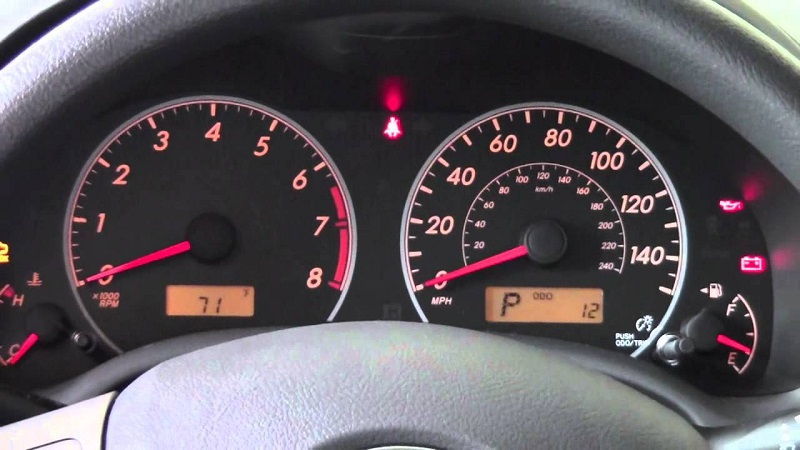This post contains affiliate links. This means I will make a commission at no extra cost to you should you click through and make a purchase [ “As an Amazon Associate, I earn from qualifying purchases.” ]. Read the full disclosure here.
Toyota Corolla Warning Lights GuideMechanic.Com As a Toyota Corolla owner, it’s important to familiarize yourself with the various warning lights that may illuminate on your dashboard.
These warning lights serve as indicators, alerting you to potential issues or malfunctions in your vehicle. Understanding what each warning light means can help you take appropriate action and prevent further damage.
In this comprehensive guide, we will explore the different warning lights that you may encounter in your Toyota Corolla. From the common ones like the check engine light and tire pressure warning light to the less familiar ones like the ABS warning light and VSC off light, we’ll cover them all. So, let’s dive in and decode the meaning behind each warning light on your Toyota Corolla’s dashboard.
Toyota Corolla Warning Lights: Check Engine Light
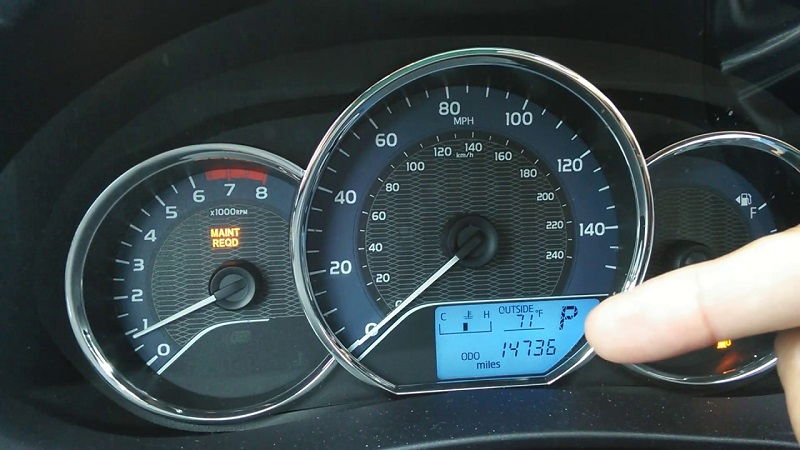
The check engine light is perhaps the most well-known warning light, and it can indicate a range of issues from minor to severe.
See Also: Toyota Camry Power Steering Fluid
When the check engine light illuminates, it means that the vehicle’s onboard diagnostic system has detected a problem with the engine, transmission, or emission control system. It is essential not to ignore this warning light, as it can lead to further damage or reduced fuel efficiency.
Possible Causes
There are numerous possible causes for the check engine light to come on in your Toyota Corolla. It could be triggered by something as simple as a loose gas cap or a faulty sensor.
Other potential causes include issues with the oxygen sensor, catalytic converter, spark plugs, or ignition coils. It is best to have the vehicle diagnosed by a professional to identify the exact cause.
Actions to Take
When the check engine light comes on, it is recommended to take the following actions:
- Check the gas cap: Ensure the gas cap is securely fastened. A loose or faulty gas cap can trigger the check engine light.
- Inspect for obvious issues: Look for any visible signs of damage or loose connections under the hood.
- Check other warning lights: If additional warning lights are also illuminated, it may indicate a more severe problem. In such cases, it is advisable to have the vehicle towed to a mechanic.
- Have the vehicle diagnosed: Visit a qualified mechanic or an authorized Toyota service center to have the vehicle’s diagnostic system scanned and the issue identified.
- Address the problem promptly: Depending on the cause, the mechanic will recommend necessary repairs or maintenance to resolve the issue and clear the check engine light.
Toyota Corolla Warning Lights: Tire Pressure Warning Light
When the tire pressure warning light comes on, it’s crucial to address it promptly to prevent tire damage and potential accidents. This warning light indicates that the tire pressure in one or more of your tires is too low or too high.
Possible Causes
The tire pressure warning light can be triggered by various factors, including:
- Underinflated tires: If the tire pressure is below the recommended level, it can cause the warning light to come on.
- Overinflated tires: Similarly, if the tire pressure is above the recommended level, the warning light may illuminate.
- Temperature changes: Extreme temperature fluctuations can affect tire pressure. Cold weather can cause tire pressure to drop, leading to the warning light activation.
- Faulty tire pressure monitoring system (TPMS): In some cases, the warning light may come on due to a malfunctioning TPMS sensor.
Actions to Take
When the tire pressure warning light is on, follow these steps:
- Check tire pressure: Use a tire pressure gauge to measure the pressure in each tire. Refer to your owner’s manual for the recommended tire pressure levels.
- Inflate or deflate tires: If the pressure is too low, inflate the tire to the recommended level. If it’s too high, release some air until it reaches the correct pressure.
- Inspect for punctures or damage: While checking the tire pressure, also examine the tires for any visible signs of punctures or damage. Replace or repair any compromised tires.
- Reset the TPMS: In some cases, once the tire pressure has been adjusted, the TPMS may need to be reset. Refer to your owner’s manual for instructions on how to reset the TPMS.
Toyota Corolla Warning Lights: ABS Warning Light
The ABS warning light indicates a problem with your vehicle’s anti-lock braking system. The ABS system helps prevent wheels from locking up during sudden braking, improving your ability to steer and maintain control of the vehicle.
Possible Causes
Several issues can trigger the ABS warning light in your Toyota Corolla:
- ABS sensor malfunction: The ABS system relies on sensors to monitor wheel speed. If one or more sensors are faulty, it can cause the warning light to illuminate.
- Low brake fluid: Insufficient brake fluid can lead to a loss of hydraulic pressure, triggering the ABS warning light.
- Faulty ABS module: The ABS module, which controls the system’s functions, may experience malfunctions, resulting in the warning light activation.
Actions to Take
See Also: P0354 Toyota Camry: What Is P0354 And How Does It Impact
When the ABS warning light comes on, consider the following actions:
- Check brake fluid level: Inspect the brake fluid reservoir to ensure it is at the proper level. If it’s low, top it up with the recommended brake fluid.
- Inspect ABS sensors: Visually inspect the ABS sensors for any visible damage or loose connections. Clean the sensors if they are dirty or obstructed by debris.
- Visit a mechanic: If the warning light persists after checking the brake fluid and sensors, it is advisable to have the ABS system diagnosed and repaired by a qualified mechanic.
Toyota Corolla Warning Lights: VSC Off Light
When the VSC off light illuminates, it signifies that your vehicle’s Vehicle Stability Control system is turned off. The VSC system helps maintain stability and traction by automatically adjusting engine power and applying brakes to individual wheels.
Possible Causes
The VSC off light can come on due to the following reasons:
- Manual deactivation: The VSC system can be manually turned off using a button or switch located on the dashboard or steering wheel.
- Traction control activation: If the traction control system is engaged, it may deactivate the VSC system, resulting in the VSC off light being illuminated.
- System malfunction: A malfunction in the VSC system can also cause the VSC off light to come on.
Actions to Take
If the VSC off light is on, consider the following steps:
- Check the VSC button: Ensure that the VSC system hasn’t been manually turned off. If it has, press the VSC button to reactivate the system.
- Check traction control status: If the traction control system is engaged, disengage it to see if the VSC off light turns off.
- Visit a mechanic: If the VSC off light remains illuminated and neither of the above steps resolves the issue, consult a qualified mechanic for further diagnosis and repair.
Toyota Corolla Warning Lights: Battery Warning Light
A lit battery warning light suggests an issue with your car’s charging system, potentially indicating a problem with the battery, alternator, or other components. The charging system is responsible for providing electrical power to run the vehicle and recharge the battery.
Possible Causes
There are several possible causes for the battery warning light to come on:
- Weak or failing battery: A worn-out or faulty battery may not hold a charge, causing the battery warning light to illuminate.
- Malfunctioning alternator: The alternator generates electricity to recharge the battery while the engine is running. If it malfunctions, the battery may not receive sufficient charge, leading to the warning light activation.
- Loose or damaged alternator belt: A loose or damaged alternator belt can cause the alternator to operate ineffectively, resulting in inadequate charging and the battery warning light coming on.
- Electrical system issues: Other electrical system problems, such as faulty wiring or a defective voltage regulator, can also trigger the battery warning light.
Actions to Take
If the battery warning light is illuminated, consider the following actions:
- Check battery connections: Ensure that the battery terminals are clean and tightly secured. Loose or corroded connections can affect the charging system’s performance.
- Inspect the alternator belt: Examine the condition of the alternator belt for any signs of damage or looseness. Replace or adjust the belt if necessary.
- Test the battery and alternator: Visit an auto parts store or a mechanic to have the battery and alternator tested. This will help identify whether the issue lies with the battery, alternator, or other components.
- Replace faulty components: If the battery oralternator is determined to be faulty, they should be replaced with new ones to restore proper charging functionality.
- Address electrical system issues: If the problem lies with the electrical system, consult a professional mechanic who specializes in electrical repairs to diagnose and resolve the underlying issues.
Toyota Corolla Warning Lights: Oil Pressure Warning Light
When the oil pressure warning light turns on, it indicates low oil pressure, which can lead to engine damage if left unattended. The oil pressure warning light is a crucial indicator of the engine’s lubrication system’s health.
Possible Causes
See Also: VSC Off Toyota Corolla 2010
Several factors can trigger the oil pressure warning light:
- Low oil level: If the engine oil level is below the recommended level, it can cause low oil pressure and activate the warning light.
- Oil pump malfunction: The oil pump is responsible for circulating oil throughout the engine. A malfunctioning oil pump can result in insufficient oil pressure.
- Oil filter blockage: A clogged or dirty oil filter can restrict oil flow and lead to decreased oil pressure.
- Worn engine bearings: Over time, the engine bearings can wear out, leading to increased clearance and reduced oil pressure.
Actions to Take
If the oil pressure warning light is on, consider the following steps:
- Check oil level: Verify that the engine oil level is within the recommended range. If it’s low, add the appropriate type and amount of oil.
- Inspect oil filter: If the oil filter is due for replacement or appears dirty, replace it with a new one to ensure proper oil flow.
- Visit a mechanic: If the warning light persists after checking the oil level and filter, it is advisable to seek professional assistance. A mechanic can diagnose the underlying cause, such as a malfunctioning oil pump or worn engine bearings, and recommend the necessary repairs.
Toyota Corolla Warning Lights: Brake System Warning Light
The brake system warning light alerts you to potential problems with your vehicle’s braking system. The braking system is crucial for your safety on the road, and any issues should be addressed promptly.
Possible Causes
There are various reasons why the brake system warning light may come on:
- Low brake fluid: If the brake fluid level is below the recommended range, it can trigger the warning light.
- Brake pad wear: Worn-out brake pads can affect braking performance and cause the warning light to illuminate.
- Brake fluid leak: A leak in the brake hydraulic system can result in a loss of brake fluid, leading to reduced braking capability and activation of the warning light.
- Malfunctioning ABS: If the anti-lock braking system malfunctions, it can also trigger the brake system warning light.
Actions to Take
If the brake system warning light comes on, consider these actions:
- Check brake fluid level: Inspect the brake fluid reservoir and ensure it is at the proper level. If it’s low, add the recommended brake fluid.
- Inspect brake pads: Examine the brake pads for signs of wear. If they are worn out or close to their minimum thickness, have them replaced by a professional mechanic.
- Look for leaks: Check for any signs of brake fluid leaks around the wheels or under the vehicle. If a leak is detected, have it repaired immediately.
- Visit a mechanic: If the warning light persists after performing the above checks, consult a qualified mechanic to diagnose and repair any underlying issues with the brake system.
Toyota Corolla Warning Lights: Airbag Warning Light
A lit airbag warning light suggests a malfunction in your vehicle’s airbag system, which is designed to provide additional protection in the event of a collision. It is essential to address this issue promptly to ensure the airbags deploy correctly when needed.
Possible Causes
The airbag warning light can be triggered by several factors:
- Defective airbag module: The airbag control module may experience malfunctions, preventing the airbags from deploying correctly.
- Faulty airbag sensors: If the sensors that detect a collision or impact are faulty, they may not trigger the airbag deployment, causing the warning light to illuminate.
- Wiring issues: Damaged or loose wiring connections within the airbag system can also lead to the warning light activation.
Actions to Take
See Also: Toyota Yaris Dashboard Lights
If the airbag warning light is on, consider the following steps:
- Check seat belts: Ensure that the seat belts are properly fastened and in good condition. In some cases, a loose or improperly fastened seat belt can trigger the airbag warning light.
- Visit a mechanic: If the warning light persists after checking the seat belts, it is advisable to have the airbag system diagnosed and repaired by a qualified mechanic. Airbag repairs should only be performed by professionals due to the complexity and safety implications.
Toyota Corolla Warning Lights: Engine Temperature Warning Light
When the engine temperature warning light comes on, it indicates that your engine is overheating. Overheating can cause severe damage to the engine and should be addressed immediately to prevent further complications.
Possible Causes
Several factors can lead to engine overheating and trigger the temperature warning light:
- Low coolant level: Insufficient coolant can result in inadequate cooling and lead to engine overheating.
- Coolant leak: A leak in the cooling system can cause a loss of coolant, resulting in overheating.
- Faulty thermostat: A malfunctioning thermostat can prevent the coolant from flowing properly, leading to overheating.
- Defective radiator fan: If the radiator fan fails to operate correctly, it can impede the cooling process and cause the engine to overheat.
Actions to Take
If the engine temperature warning light is on, consider these actions:
- Pull over safely: As soon as it is safe to do so, pull over to a safe location and turn off the engine. Continuing to drive an overheating engine can cause severe damage.
- Allow engine to cool: Open the hood and let the engine cool down before attempting any further checks or repairs.
- Check coolant level: Once the engine has cooled, check the coolant level in the reservoir. Add coolant if it is low, but be cautious as the engine may still be hot.
- Inspect for leaks: Examine the cooling system for any signs of leaks. If a leak is detected, have it repaired immediately.
- Visit a mechanic: If the warning light persists after checking the coolant level and addressing any visible issues, consult a qualified mechanic to diagnose and repair the underlying cause of the engine overheating.
Toyota Corolla Warning Lights: Fuel Level Warning Light
The fuel level warning light notifies you when your fuel level is low. Ignoring this warning light can lead to running out of fuel and potentially being stranded on the road.
Possible Causes
The fuel level warning light is typically triggered when the fuel level drops below a certain threshold. It is a reminder to refuel your vehicle to avoid running out of gas.
Actions to Take
When the fuel level warning light comes on, follow these steps:
- Find a nearby gas station: Locate the nearest gas station and plan your route accordingly.
- Refuel your vehicle: Stop at the gas station and fill up your tank with the appropriate fuel type for your Toyota Corolla.
- Reset the warning light: After refueling, the fuel level warning light should automatically turn off. If it remains illuminated, consult your owner’s manual for instructions on how to reset the warning light.
In conclusion, understanding the warning lights in your Toyota Corolla is crucial for your safety and the longevity of your vehicle.
By familiarizing yourself with these warning lights and their meanings, you can quickly identify potential issues and take appropriate action.
See Also: 2001 Toyota Camry Catalytic Converter
Regular maintenance and prompt attention to warning lights will help you keep your Toyota Corolla running smoothly for years to come.

